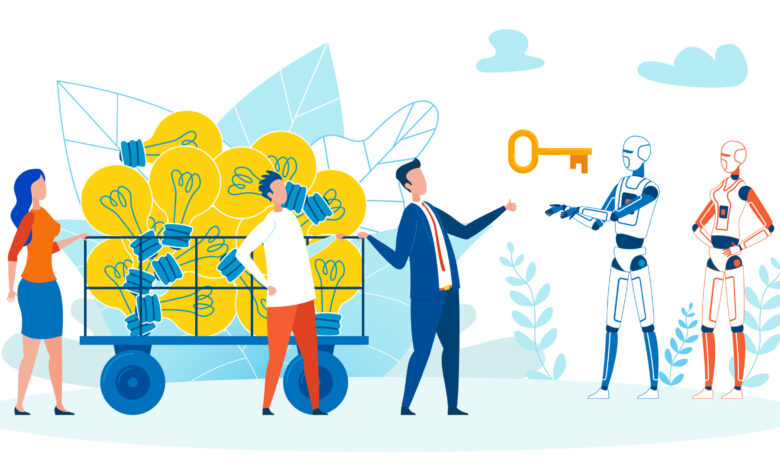Unlocking the Potential of Generative AI in Insurance

Generative artificial intelligence (AI) has sparked a lot of interest from insurers and reinsurers because of its potential to revolutionize innovation, cut costs and improve the customer experience.
Generative AI (or “Gen AI”) is the term used for technology that is able to generate completely new text, images, video and other materials when prompted by a user. It does so by using reference data to establish patterns and then providing new material with the same (or similar) characteristics.
Comparing generative AI with its machine learning predecessor is a bit like comparing a child, who has to be taught to read and write, with a teenager, who can do these things already and is moving on to history.
While the neural networks in machine learning had to be trained through the creation of large, labeled datasets that were time-consuming and expensive to produce, that need is eliminated with generative AI. With just a few instructions, generative AI models can find patterns between elements mathematically and produce accurate predictions and original content across a wide variety of scenarios at speed.
The upshot is a vastly greater level of understanding of—and response to—text and images than in machine learning, and this capability becomes exponentially more powerful as the algorithm gains expertise. Far more than just a new technology, generative AI is a transformative force.
Generative AI’s enormous potential is closely matched by the euphoria surrounding it. Unlike machine learning, or indeed blockchain, generative AI has garnered widespread C-suite buy-in. That’s largely down to ChatGPT. Quickly becoming the fastest-growing consumer application ever after its launch just over a year ago, the public chatbot is now mainstream and businesses are playing catchup.
Caution Required
Those insurers that are already fully digitized are better positioned to integrate generative AI solutions and plug-ins seamlessly. However, for insurers with more traditional, paper-based processes, generative AI can also be harnessed to create efficiencies. The perception that insurers and insurance agencies must digitize first before they can use generative AI at all is a false one.
Some insurance sector companies are already trialing ChatGPT or another public interface. However, the huge amount of sensitive, personal data held by our industry means firms should move extremely carefully.
The perception that insurers and insurance agencies must digitize first before they can use generative AI at all is a false one.
A better approach is to train the large language models (LLMs) used in generative AI within the private sphere via a sandbox-type approach that mitigates the risk of data leakage.
When deploying the technology, companies should take small steps initially, looking first to harvest the low-hanging fruit. Middle and back-office functions—where there is duplication or where part of the process is manual—are obvious places to start.
At insurance agencies, producing proof of coverage or checking policies with binders are two such functions.
Within underwriting at commercial insurers, generative AI can be akin to having a junior assistant in the room, albeit a particularly speedy one, with unlimited time and infinite patience. If you train the LLM by asking it specific questions, it can locate and instantly extract information from voluminous engineering and risk survey reports.
Generative AI can be used to transform risk assessment and underwriting using the ChatGPT platform integrated into the secure Microsoft Azure OpenAI Service to analyze an extensive property report. Traditionally, an underwriter spends hours reading such reports. However, in our demonstration, the underwriter could instantaneously extract key highlights.
In personal lines, there has been success using the technology to perform entry-level work at customer service centers, such as making changes to policies.
To implement generative AI, a helpful approach is to look at the relatively straightforward processes within an operation, slowly start increasing the proportion handled by generative AI and, as confidence grows, reduce the level of human checks on its output.
Where to Proceed With Caution
When deploying generative AI across an organization, it is important to tread carefully—be wary, for example, about allowing it to adjudicate on claims or to make underwriting decisions, because of the fundamental part these activities play in the insurance contract. Product design and policy language creation are other areas where unleashing generative AI would be premature.
It’s important to remember that generative AI is trained on data on the Internet, which is full of racial, gender, social, age-related and other biases. Until you are sure that that the bias is controlled and identified—because it certainly can’t be eliminated—caution is key. The alternative is customer harm and huge reputational damage for the individual insurance business, and potentially for the industry as a whole.
It goes without saying that companies using generative AI should first establish robust governance frameworks. Regulators can also play a meaningful role in helping ensure the application of generative AI aligns with the broader societal function of insurance. However, the fast pace of technological development means it’s essential for policymakers to move at speed.
Generative AI can never replace the actions that stem from an organization’s values and culture. For example, AI should not be making decisions around whether to help out a longstanding customer, or to pay claims en masse in an exceptional situation because it’s the right thing to do.
Many executives have gotten very excited about the scope for savings that generative AI offers. Deloitte’s third-quarter North American CFO Signals Survey cited cost savings as the biggest benefit. Some two-thirds of the executives surveyed said use cases of generative AI and an evaluation of the costs, benefits and returns are what they need to make informed decisions about how to use it.
The industry needs to experiment away from the public glare and use extreme caution, focusing on those painless gains that can be achieved without putting customers or reputations at risk.
It is very clear that the technology should be regarded as a tool to liberate employees from laborious, repetitive tasks, rather than as the key to eliminating a given percentage of the workforce. Indeed, it is reassuring to see that 59% of CEOs in EY’s July 2023 global survey said jobs affected by AI would be counterbalanced by new roles.
In some quarters of the insurance industry, an equally unhelpful attitude to generative AI is that it should take a backseat to immediate priorities, such as trimming expense ratios, tracking ever-evolving cyber risks, or dealing with the increased frequency of natural catastrophes. In fact, generative AI can help with all three, and those insurance groups that refuse to engage will lose relevance.
In the future, the right combination of data and technology will be the backbone of insurance companies, with a small number of people being very efficient about building scale and focusing on more complex and meaningful work. Generative AI should also help us rebrand as data science specialists to attract the young talent that we’ve struggled to recruit, as well as plug the attritional workforce losses created by an unprecedented level of retirees from the industry.
The transformative force that is generative AI can address the insurance sector’s need to digest and process massive amounts of data from diverse sources and extract insights. It empowers insurers to enhance risk assessment, meet the evolving needs of customers, and streamline operations.
However, in the near term, a considered approach is needed. The industry needs to experiment away from the public glare and use extreme caution, focusing on those painless gains that can be achieved without putting customers or reputations at risk.
This article first was published in Insurance Journal’s sister publication, Carrier Management.


